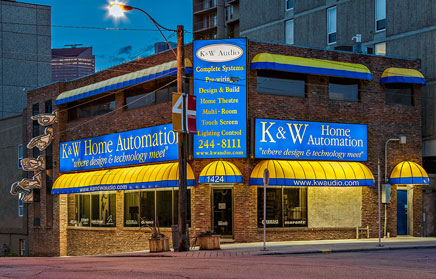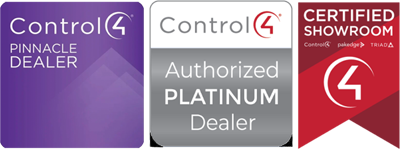TIP# 31:
We assume that you have a pretty good sounding system, but like most of us you would like something better. Let’s consider a variety of enhancement options that can provide you with a real and positive difference in your system’s quality, without the need to make major changes. There is a wide range of auxiliary components aimed at doing just that. So, let’s peruse the world of accessory enhancements and see what’s out there for us.
INTERCONNECTS
Cables are basically fixed line filters, which means that they affect the overall sound (or video) spectrum in a specific way. The philosophy behind cable construction is the single most important element contributing to its performance. The thickness of the cable alone doesn’t mean all that much. With an interconnect cable, thickness may indicate better shielding and as a result sound “darker” with less background noise. Generally speaking, in the case of speaker wire, the thicker it is the greater the amount of bass for the system.
Attaching a quality interconnect cable between the most used source (usually CD) and the Amplifier is the place to start. It can smooth out and enrich the sound produced by a budget CD Player. This upgrade can do more to enhance sound quality than the purchase of the next model up. In more exotic systems, the CD Player is already quite smooth, so the more advanced design will increase the “room space” of the recording, do a better job of isolating the instruments and voices, and add depth of image. Good interconnects have gold connectors because gold is an inert metal that doesn’t oxidize. The real performance of an aftermarket interconnect is a result of the design and construction of the cable itself.
Good interconnect cables for budget priced systems range from $40 to $80. Higher end systems will benefit more from the higher performance cables in the $80 to $250 range. There are a bunch of great, no holds barred cables, in the $300 to $1,500 range, that work wonders in “state of the Art” mega buck systems. $1,500 may sound like a lot to pay for a pair of interconnects, but if you have a $15 to $20,000 system, it is difficult to spend $1,500 to get the really noticeable difference one can get from simply upgrading the interconnects.
CONNECTORS
The point of termination between a cable and a component is a high gain (or loss) point. Gold is used to keep performance consistent, with maximum surface area being of main concern here. Connectors minimize potential loss from a good cable, rather than enhance the performance of a mediocre one. A heavy duty spade or banana connector on the speaker cables may net you a 5-10 times larger surface contact area, and, depending on cable quality, much better sound. Convenience is also a factor, as simply pushing a gold connector home is cleaner and faster than spending ten minutes unlocking bare wire from underneath a binding post, or making sure all the strands are in the hole of a push style clip.
In the case of RCA patch cord connectors the same rules apply to speaker cable. Surface area and a tight fit when attached give us the best possible performance from a selected cable. Sometimes by matching a bulk cable with aftermarket ends can result in a superior cable for less than a pre-packaged one. This is especially true for long or custom lengths. Good speaker cable connectors are in the $5 to $20 a pair range, and RCAs start at $15 and can exceed $100, although the best value is under $30.
SPEAKER CABLE
If speakers have four connections on the back, they are designed for Bi-Wiring. Bi-Wire cable has four ends for attaching to your speakers while the other end has just two connections. Remove the jumpers between the matching posts on the back of the speakers and attach Bi-Wire to get a good extension in high and low frequency dynamic range. This set-up will feed the two drivers separately, thus bypassing certain components in the speaker’s crossover (which may compromise the audio signal). Result: a big improvement.
If you have only two connectors on the back of your speakers, don’t fret. Replacing the old lampcord with thick, oxygen free copper wire, will add bass, When a heavily shielded internally twisted multi-guage time corrected cable is added, a new found depth, authority and image placement will occur. The latter resembles a garden hose and is called Powerline, though often referred to as Monster Cable. Monster was first to manufacture all the cables we have discussed. Often, their name is now used generically.
A quality copper wire cable is priced in the $1 to $3 per foot range, while Bi-Wire and Powerline range from $3 to $9 per foot. Keep in mind that good cable has a lifetime warranty and we offer a no loss trade up policy. If your system changes, you can improve the cables or modify the lengths to suit without splices or loosing your initial investment.
DOO-DADS AND THINGAMABOBS
Proper speaker supports will enhance any system. If you already have spike accepting floor standing loudspeakers, use ’em! For every action there is an equal and opposite reaction. When the speaker cone moves forward the cabinet is pushed backward. This is called resonance, which makes the sound less clear or defined, and robs the speaker of it’s sound producing energy, which is lost to moving the box. Spikes establish a small surface area contact with the floor and a huge amount of pressure. The speaker has more stability, is anchored firmly in place (because effectively it is much heavier), and is now able to use all of it’s energy moving the drivers in the cabinets, result, cleaner sound with more authority.
The spike thing carries through to electronics too. All electronics are susceptible to microphonics. Microphonics is the effect of vibration on an electronic device. If we are old enough to remember turntables we would remember that playing it too loud caused feedback from the speakers, making the turntable mistrack resulting in distortion. If we were to tap a tube in an amplifier while it was playing it would produce a very interesting warbling tone. Solid state electronics are also susceptible to this phenomenon.
Heavy metal platforms with spikes or “tip toes” as they are more commonly referred to, placed under a component will mass load it like our speaker example above and improve the definition of the component, CD, VCR or Amplifier. The harder the material used in the “tip toe” the better the performance. The finest tip toes are made from ceramics which is very close to the hardness of a diamond, the material also affects the price. While the current trend in isolation platforms is toward the tip toe (especially the ceramic type) the space age rubber bearing is a good alternative.
Rather than fooling the chassis into thinking it is real heavy, rubber bearings work like shock absorbers in a car to damp out most vibrations before they reach the component chassis. Two component bearings, made of whizzy materials are in the same price range as the state of the art ceramic cones, depending on size $70 to $170 per set of three. As with any component they must be heard to be appreciated. We’ll give you a demonstration if you wish. Be prepared for a surprise!


